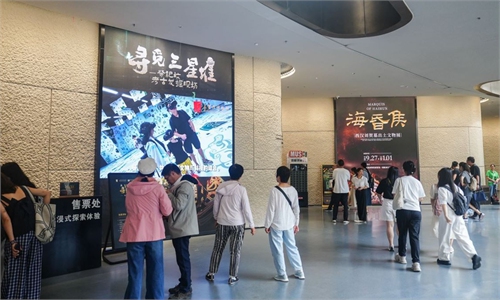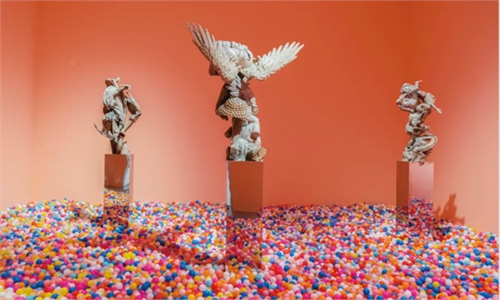ARTS / CULTURE & LEISURE
Chinese museums attract younger, international patrons
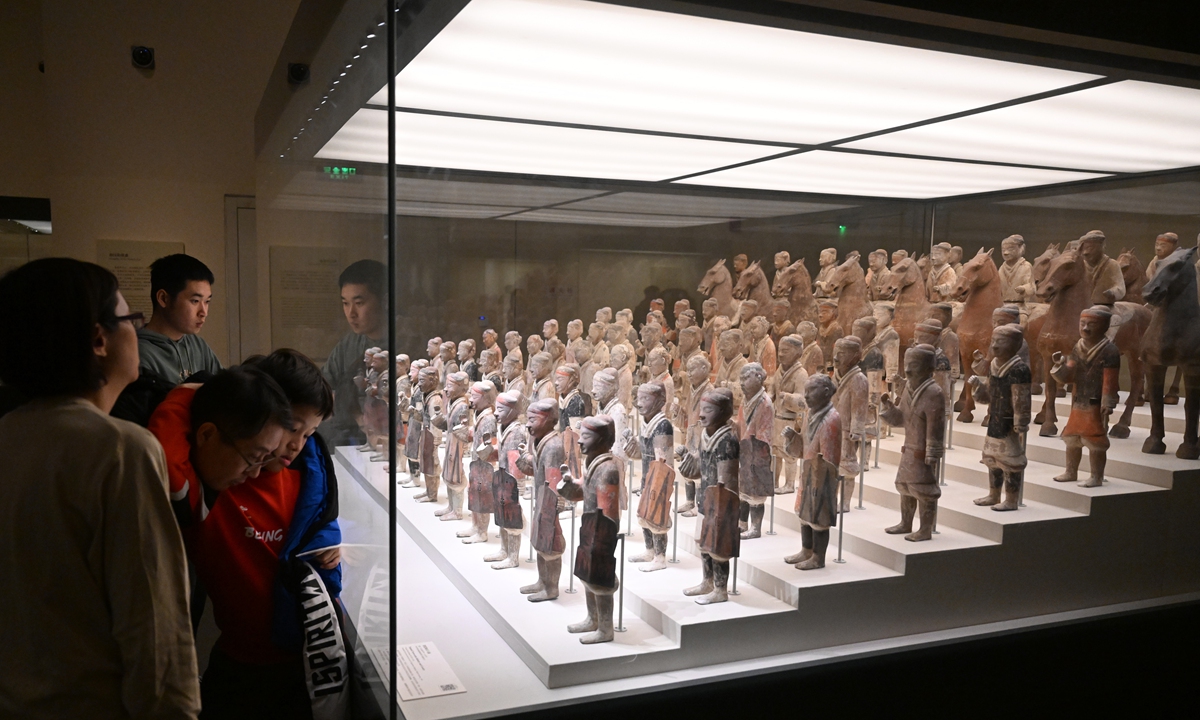
Visitors explore exhibits at the National Museum of China in Beijing on October 13, 2024. Photo: VCG
As the gates open, tourists rushing into the National Museum of China (NMC) in Beijing queue up to take photos with the Ming Dynasty (1368-1644) Empress Xiaoduan's phoenix crown from the best possible position, resulting in a long line that snakes through the exhibit hall. This scene is reminiscent of daily scenes in front of the Mona Lisa at the Louvre.
The popularity of the cultural relics is closely tied to the soaring demands for two original fridge magnets designed and launched by the museum, both inspired by the phoenix crown. The magnets have been instant hits, with over 530,000 units sold as of November 27, according to data from the museum on Tuesday.
The creative souvenir has attracted great attention from people interested in cultural relics and their history. The innovative exploration is an important step by Chinese museums to extend the influence of cultural exhibitions to the daily lives of visitors, also attracting a large number of young history buffs to museums.
The NMC, for example, had welcomed over 630,000 visitors as of November 28, 62 percent of whom were under 35.
In addition to cultural products, digital technologies such as 3D scanning, artificial intelligence, and augmented reality (AR), which can offer an even more immersive experience at exhibitions and access to millennia-old relics and exhibits from all around the world, are also attracting younger crowds to museums.
"When I stand in front of the display cases and gaze at these cultural relics, I can feel a connection to the Chinese civilization. The textbooks cannot convey such profound feelings," Zhang Jingwen, a Beijing middle school student, told the Global Times on Tuesday.
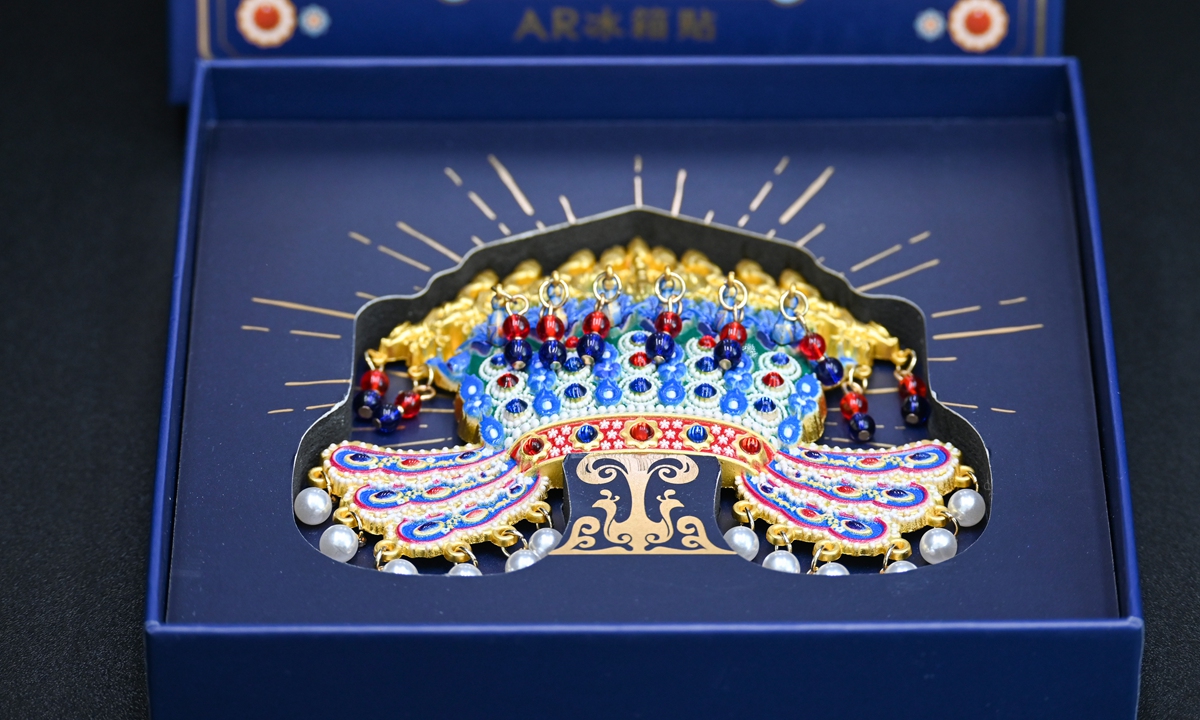
A fridge magnet inspired by the phoenix crown at the National Museum of China Photo: VCG
Innovative engines
During this year's National Day holidays, over 6,800 museums across China welcomed 74.88 million visitors. As the "cultural fever" around museums continue to grow, Chinese cultural workers have continually generated innovative ideas to keep visitors engaged and interested.
"We initially produced a small batch just to test the waters and never expected it to become such a hit. The fridge magnet's going viral can been seen as a rise based on its accumulated strength," Liao Fei, a deputy director of business development department at the NMC, told the Global Times.
Liao said that the design team concentrated on researching the historical significance and Chinese aesthetics of the cultural relics while creating the cultural products. Additionally, they have been gathering feedbacks from museum visitors to enhance the design based on their insights.
These efforts have not only created popular products, but also produced another kind of fridge magnet inspired by the prized caisson artifact at the Beijing Ancient Architecture Museum. Cultural relics, otherwise lost to history, are made available and accessible to the public conscience through such efforts.
With the aim of bringing precious cultural relics to life, many advanced technologies have been adopted by Chinese museums. These innovations have created a digital world that transcends the barriers of space and time, allowing more young audiences to deeply immerse in history and culture.
The Digital World of Rhino-Shaped Zun exhibition at the NMC extends a digital exhibition for just one cultural relic. At the exhibition, an AR technology allows visitors to participate in the "restoration of the vessel, during which they can see the 17 artifacts located in the belly of the rhino."
Another highlight of the exhibition is the use of pinhole imaging, which allows visitors to experience the feeling of being a researcher by examining the gold and silver ornaments on the surface of the vessel using a high-definition microscope.
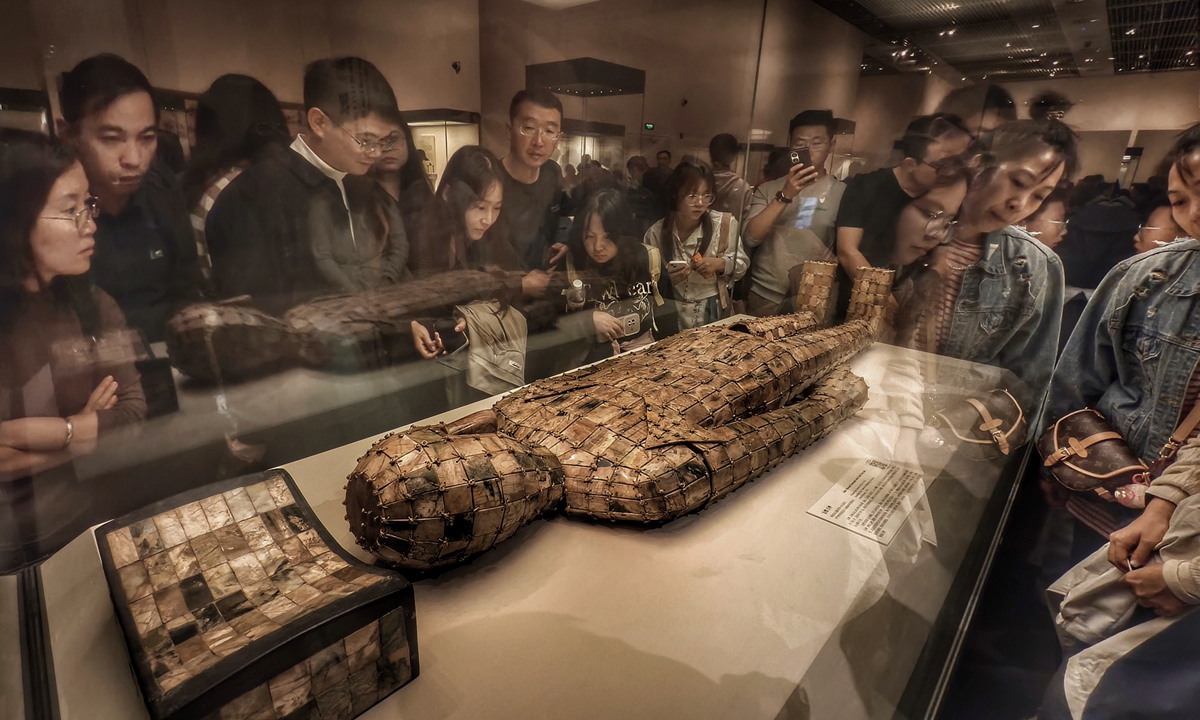
Visitors examine the jade suit sewn with gold thread at the National Museum of China. Photo: VCG
Window for exchange
With an influx of international visitors in Chinese museums following an increase in inbound tourism, many museums in China have been broadening the global horizon and improving services offered to foreigners, so as to serve as a portal for cultural exchanges with the world.
Mei Songsong, a deputy director of social education department at the NMC, told the Global Times that they have been polishing the multilingual introductions and guided tour to exhibits, aiming to make the museum experience far more convenient for international visitors.
Additionally, Chinese museums have also been more focused on international cooperation. This year, curators of the NMC have hosted or participated in six inbound exhibitions and four outbound exhibitions, the highest number of projects in recent years.
Featuring a total of 279 artifacts from ancient Greece, the exhibition titled The Countless Aspects of Beauty in Ancient Art attracted more than 40,000 visitors to the NMC in three weeks. Among them, the visitors under the age of 35 accounted for 62 percent.
Other local museums such as the Henan Museum in Central China also cooperated with international museums, offering cultural feasts highlighting the beauty in different civilizations to museum goers.

